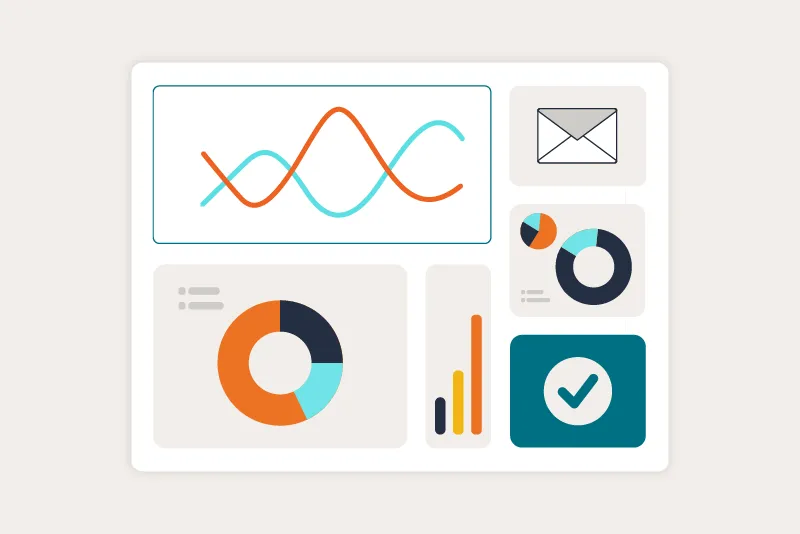The Value of Data-Driven Lawyer Timekeeping Software
Written by
|
November 4, 2022
Written by Smokeball
|
November 4, 2022

Written by Jordan Turk
|
November 4, 2022

Everywhere you look, data drives the world; that’s why Smokeball’s legal timekeeping software turns your firm’s work into valuable data. Organizations and businesses collect enormous volumes of data and then analyze them for competitive advantages. It’s all about how we manage, integrate, store, access and leverage data.
For example, Facebook uses 98 data points to target advertisement to its users. Here’s another interesting stat – did you know that a Facebook post at 7 p.m. results in more clicks than posts at 8 p.m.? Marketers use this information to reach more consumers and know when you are most likely to be engaged. This is data analytics at work.
Legal professionals can benefit from data in similar ways. Because Smokeball automatically tracks every minute spent in our timekeeping software, it’s also automatically capturing the valuable data that fuels your firm’s productivity and profitability.

How much data analytics does your law firm leverage?
At the top level, data analytics for small law firms lets you measure the health of your practice. You’ve probably heard of KPIs, which stands for Key Performance Indicators. KPIs are quantifiable metrics used to measure how well you are meeting your goals.
What KPIs do you have for your small law firm? How are your individual firm members handling their caseloads? What’s your new client conversion rate? And are you on track to meet or exceed your realization rate?
Learn more tips for using your firm’s actionable data
Individual performance
Now that the majority of law firms are working in a hybrid environment, partners have lost desk-side visibility into employees’ workloads. It’s tough to know who’s hitting their numbers, who’s overworked and who could benefit from additional coaching. Smokeball’s Law Firm Insights show your profitability by matter, fee-earner and realization rate, so it’s easy to keep you with your team and offer support or kudos.
Team members are also likely to remain more loyal to your firm if you show them you’re invested in their progress and wellbeing; that’s especially true in light of The Great Resignation of 2021. Apply your timekeeping software data to annual performance reviews and use the conversation as an opportunity for mentorship and goal-setting.
Client conversion rate
Our first example of data analytics for small law firms to track is Client Conversion Rate. Client Conversion Rate is a percentage metric calculated by taking the number of new clients divided by the number of potential clients. For example, if you had 20 potential clients inquire about your practice last month with 8 converting to new clients, your Client Conversion Rate is 40%.
The first step to this KPI is analyze your client conversion rate using data from Smokeball’s timekeeping software. Start simple by tracking how many potential clients contact you and how many convert to a client. Then, get more detailed by asking questions and tracking how potential clients contacted you. When a potential client calls your office, find out how they found you. Was it through a Google search, Facebook, a client referral or print ad. If a potential client contacts you through your website or emails you, learn as much as you can about how they found you.
Track your client conversion rate KPI monthly. This gives you enough data analytics to adjust your focus on where to market, make updates to your website or invest in advertising.
Realization rate
Realization rate measures the difference between the time recorded and the percentage of that time that is paid by the client. For example, if you record six hours of billable time but only four hours are paid by the client, your realization rate is 67%. Of course, you want your rate to be 100%, but that’s not always possible. You sometimes bill less hours than performed because the client requests a reduction, you took longer than expected on a task or you discount your fees for a cost-sensitive client. No matter the reason, any increase in your realization rate means revenue and profits for your firm.
A byproduct of tracking the realization rate is that you will know where you are spending your time. This will allow you to identify opportunities to improve efficiencies, consider new technology to improve accuracy and speed, and eliminate administrative tasks that can be performed by a computer or staff member with lower costs.
Realization rates also help you consider flat or fixed fee arrangements. After tracking the amount of time on specific types of cases, you will be able to estimate a flat or fixed fee that can help you achieve realization rates greater than 100%.
How firms can collect accurate data
Without an automatic, accurate method of collecting data, you’ll spend too much time tracking KPIs and not enough time hitting them.
Smokeball timekeeping software helps you keep track of your work and obtain the data you need to set goals and measure performance. Because Smokeball allows you to work throughout the day without constantly thinking about tracking your data, you’ll get more work done and collect more data. For example, when you create a Microsoft Word document, Smokeball tracks the exact amount of time you spent editing. If you read and respond to emails, Smokeball tracks every second of your time.
Click here to see how Smokeball timekeeping software tracks all your work and increases the profitability of firm by an average of 34%.
8 Benefits of Smokeball’s Automatic Lawyer Time-Tracking Software
Capture all your billable time and grow more efficient and profitable
Learn more about Smokeball document management for law firms:
Book Your Free Demo
Ready to see how Smokeball client intake software helps you Run Your Best Firm? Schedule your free demo!











